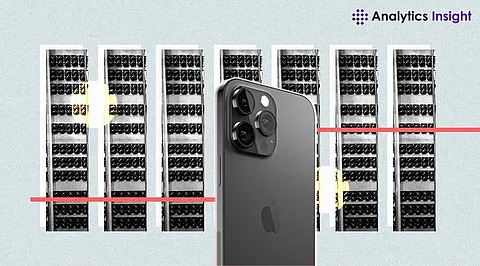

Smartphones have evolved into crucial communication, entertainment, and productivity tools in the digital era. Among these devices, the iPhone stands out as a symbol of innovation and technological advancement. But beyond its sleek design and user-friendly interface, the iPhone holds a treasure trove of data that fuels various functionalities and services. This wealth of data also makes it a prime target for data mining, a process that extracts valuable insights and patterns from large datasets. In this article, we'll delve into the world of data mining in iPhones, exploring what it entails and what users need to know.
Data mining is the process of analyzing large datasets to discover patterns, trends, and associations that can be used to make informed decisions. It involves various techniques, including statistical analysis, machine learning, and artificial intelligence, to extract valuable information from raw data. In the context of iPhones, data mining involves collecting and analyzing user data generated through various activities such as browsing the web, using apps, and interacting with the device's features.
Location Data: iPhones collect location data through GPS, Wi-Fi, and cellular networks. This information is valuable for services like mapping, navigation, and location-based recommendations. However, it also raises privacy concerns as users' movements can be tracked and analyzed.
App Usage: Every time you use an app on your iPhone, data about your interactions, preferences, and behavior may be recorded. This data is often used to personalize recommendations, improve app performance, and target advertisements.
Biometric Data: With features like Touch ID and Face ID, iPhones capture biometric data such as fingerprints and facial features. This data is primarily used for authentication and security purposes but may also be utilized for user profiling.
Communication Data: Messages, emails, and call logs are valuable sources of information for data mining. Analyzing communication patterns can reveal social networks, interests, and preferences.
Health and Fitness Data: iPhones equipped with health and fitness tracking capabilities collect data related to physical activity, sleep patterns, and vital signs. This data is utilized to monitor health metrics and provide personalized insights and recommendations.
Personalization: Data mining enables iPhones to deliver personalized experiences tailored to individual preferences and behavior. This includes personalized recommendations for apps, content, and services based on past usage patterns.
Predictive Analytics: By analyzing historical data, iPhones can predict future behavior and preferences. This capability is leveraged in various applications, such as predicting traffic patterns, suggesting travel routes, and anticipating user needs.
Targeted Advertising: Advertisers use data mining techniques to target ads to specific demographic groups or individuals based on their interests, behaviors, and preferences. This allows for more effective marketing strategies and increased conversion rates.
Health Monitoring: Data mining plays a crucial role in health and fitness tracking on iPhones. By analyzing health-related data, such as activity levels and sleep patterns, the device can provide insights into users' overall well-being and suggest lifestyle modifications.
Security and Fraud Detection: Data mining is employed to detect anomalies and patterns indicative of security breaches or fraudulent activities. This includes identifying unauthorized access attempts, unusual spending patterns, and suspicious behavior.
While data mining has many advantages, it also presents serious privacy issues. The collection and analysis of sensitive user data without adequate consent or transparency can lead to privacy violations and breaches of trust. To address these concerns, Apple has implemented various safeguards to protect user privacy, including:
Privacy Settings: iPhones offer extensive privacy settings that allow users to control the collection and use of their data. This includes options to limit ad tracking, restrict app permissions, and manage location services.
On-Device Processing: Apple emphasizes on-device processing to minimize the need for data to be sent to external servers for analysis. This approach helps preserve user privacy by keeping sensitive data local to the device.
Transparency and Accountability: Apple provides detailed explanations of its data collection practices and how user data is used and shared. Additionally, the company is committed to stringent privacy standards and regularly updates its policies to reflect evolving privacy concerns.
Data mining plays a central role in enhancing the functionality and user experience of iPhones. By analyzing vast amounts of data generated by users, these devices can deliver personalized recommendations, predictive insights, and advanced features. However, users need to be aware of the data mining practices employed by their iPhones and take steps to protect their privacy.
Join our WhatsApp Channel to get the latest news, exclusives and videos on WhatsApp
_____________
Disclaimer: Analytics Insight does not provide financial advice or guidance on cryptocurrencies and stocks. Also note that the cryptocurrencies mentioned/listed on the website could potentially be scams, i.e. designed to induce you to invest financial resources that may be lost forever and not be recoverable once investments are made. This article is provided for informational purposes and does not constitute investment advice. You are responsible for conducting your own research (DYOR) before making any investments. Read more about the financial risks involved here.
